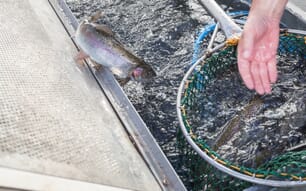Eleven samples, each consisting of approximately 47 fish, were collected from the three farms operating in the fjord where the escapees were captured, according to the study published by Kevin A Glover on BMC Genetics.
In order to gain a better general understanding of the genetic structure of rainbow trout strains used in Norwegian aquaculture, seven samples (47 fish per sample) were collected from six farms located outside the region where the escapees were captured.
All samples, including the escapees, were genotyped with 12 microsatellite loci.
Results
All samples displayed considerable genetic variability at all loci (mean number of alleles per locus per sample ranged from 5.4-8.6).
Variable degrees of genetic differentiation were observed among the samples, with pair-wise FST values ranging from 0-0.127.
Self-assignment tests conducted among the samples collected from farms outside the fjord where the escapees were observed gave an overall correct assignment of 82.5%, demonstrating potential for genetic identification of escapees.
In the "real life" assignment of the 35 captured escapees, all were excluded from two of the samples included as controls in the analysis, and 26 were excluded from the third control sample. In contrast, only 1 of the escapees was excluded from the 11 pooled samples collected on the 3 farms operating in the fjord.
Conclusion
Considerable genetic variation exists within and among rainbow trout strains farmed in Norway.
Together with modern statistical methods, this will provide commercial operators with a tool to monitor breeding and fish movements, and management authorities with the ability to identify the source of escapees.
The data generated in this study were used by the Norwegian police to initiate an investigation of the company operating the three farms in the fjord where escapees were observed.


